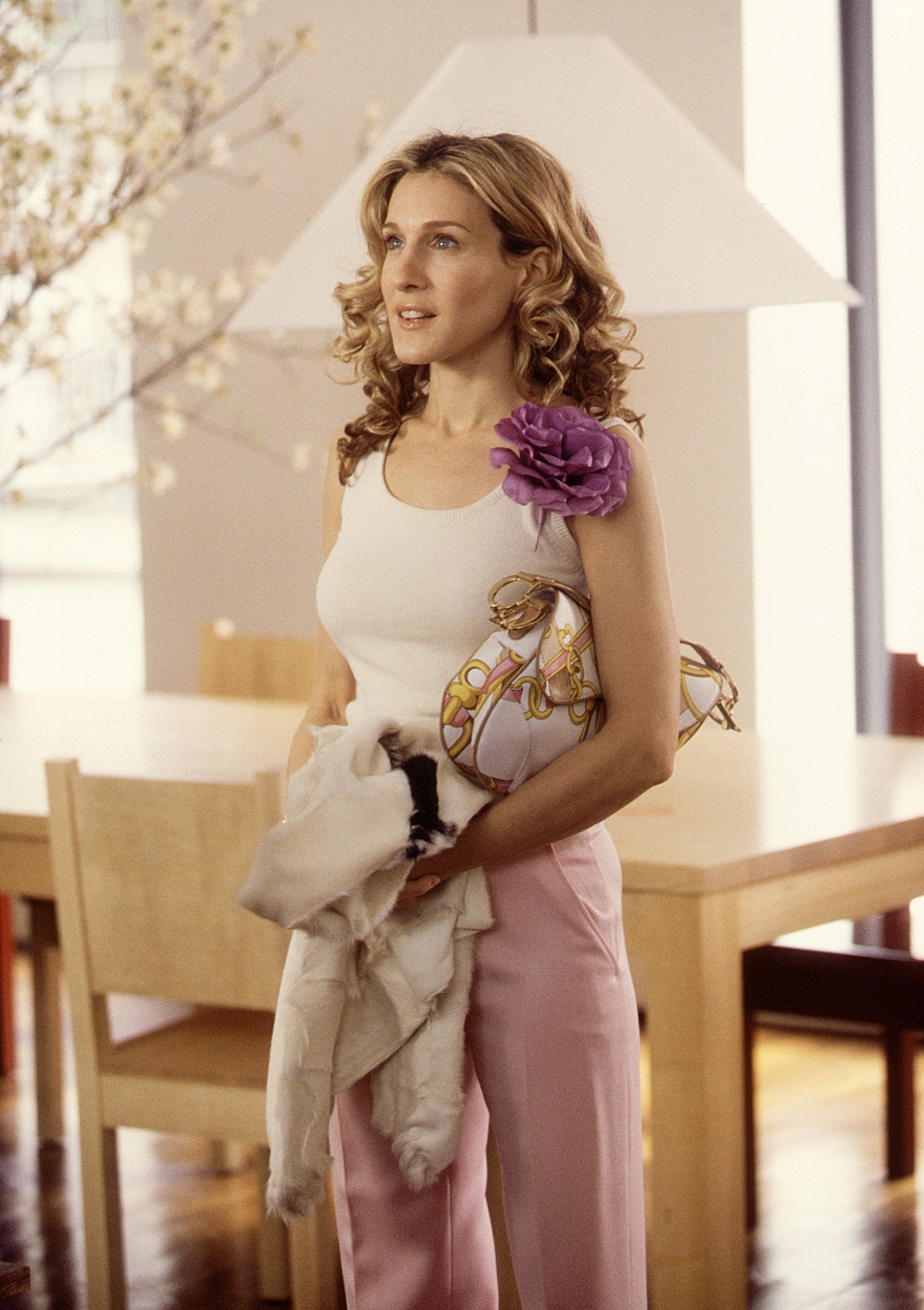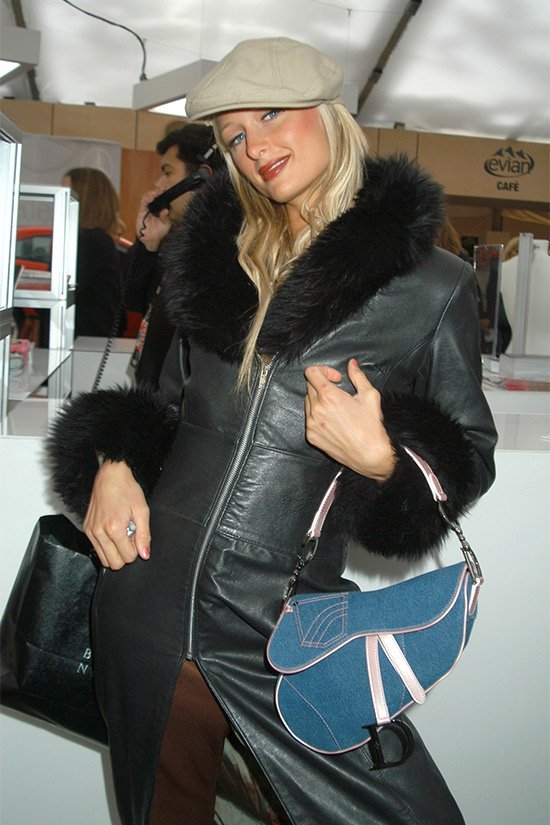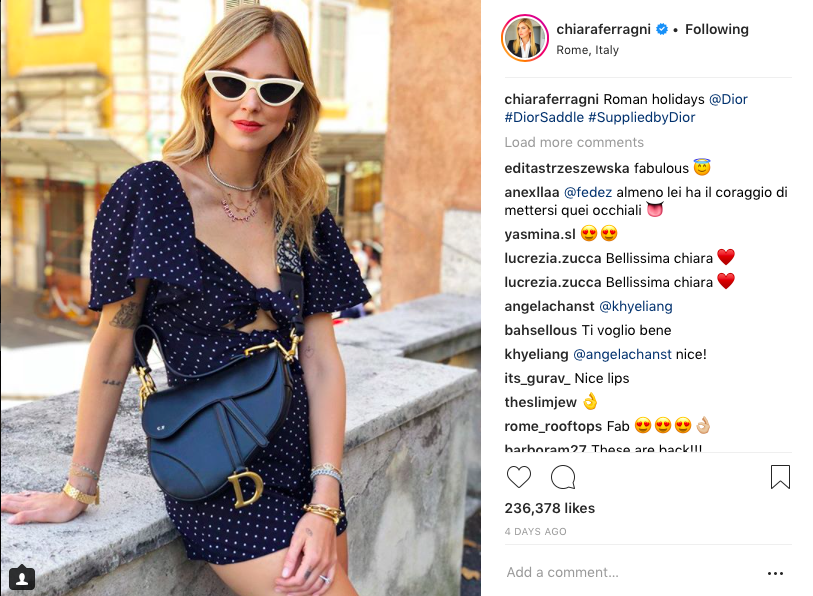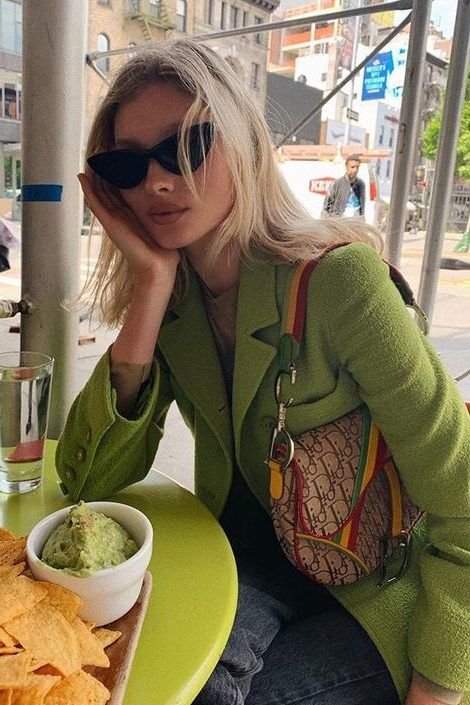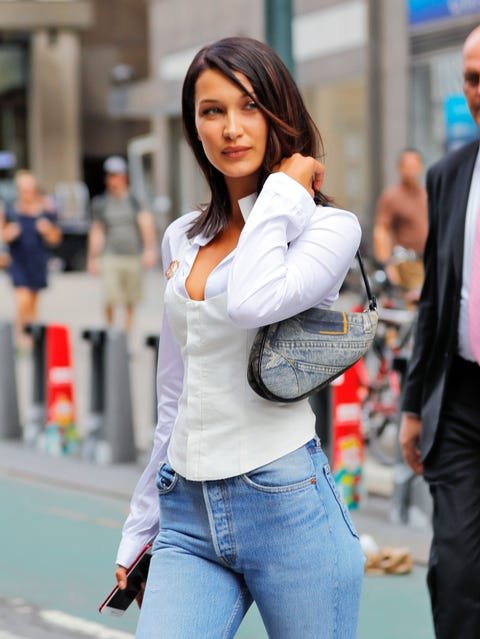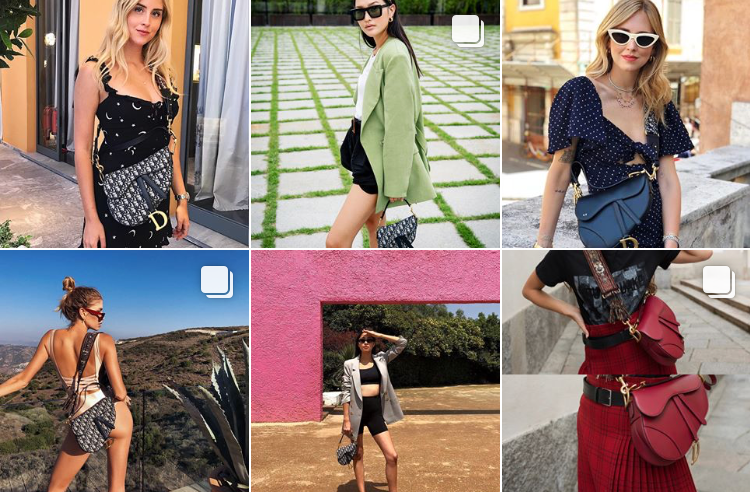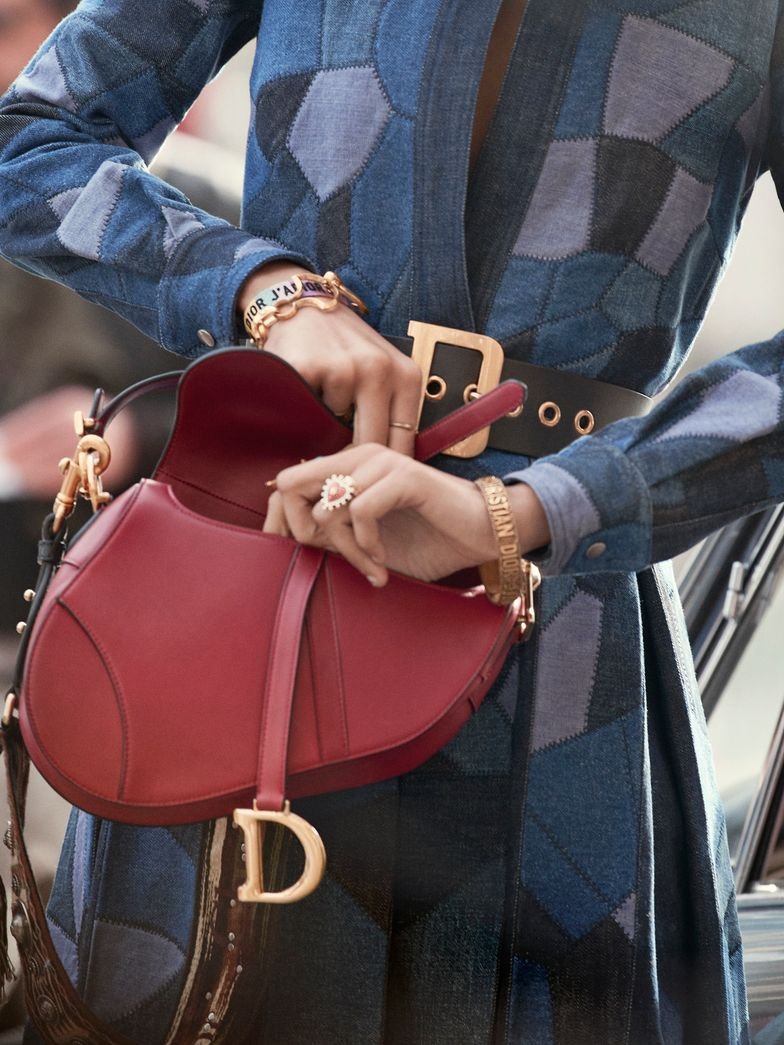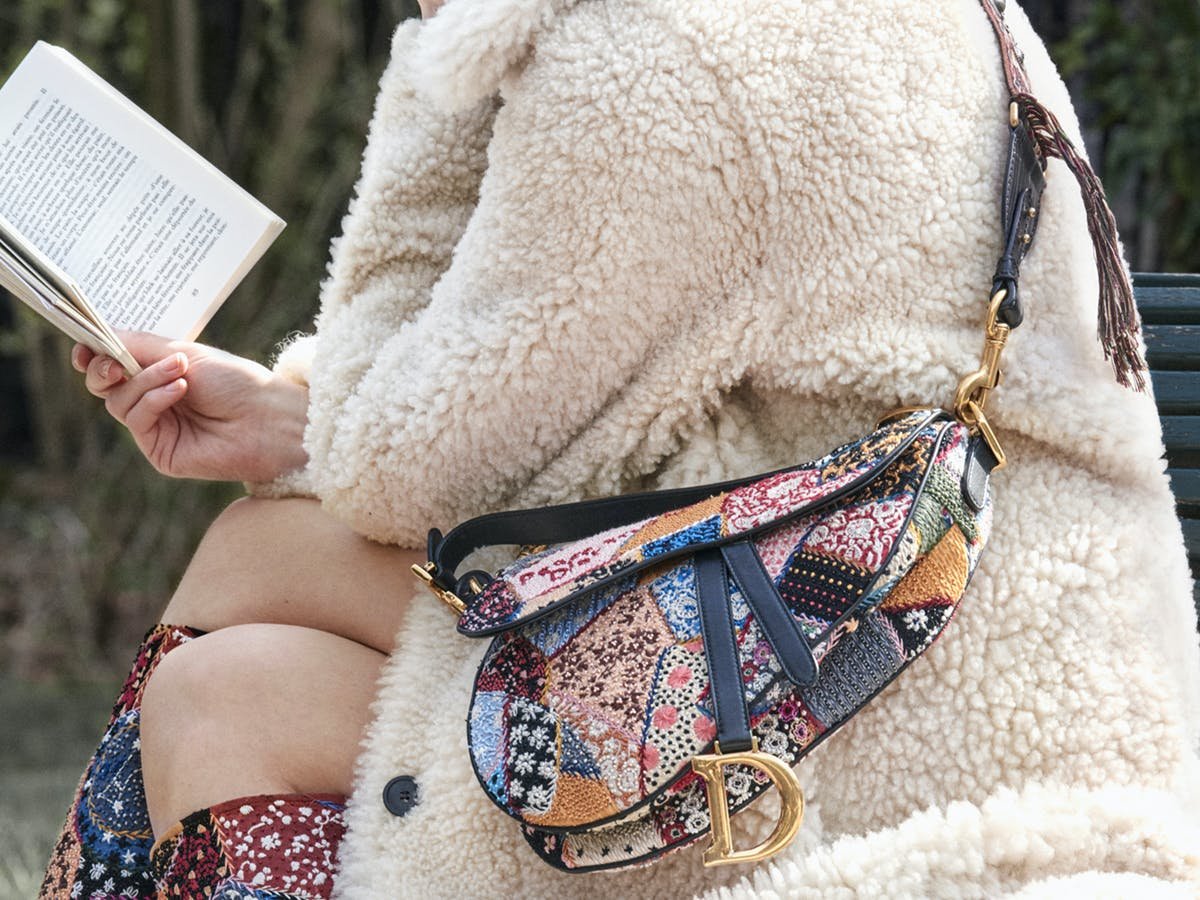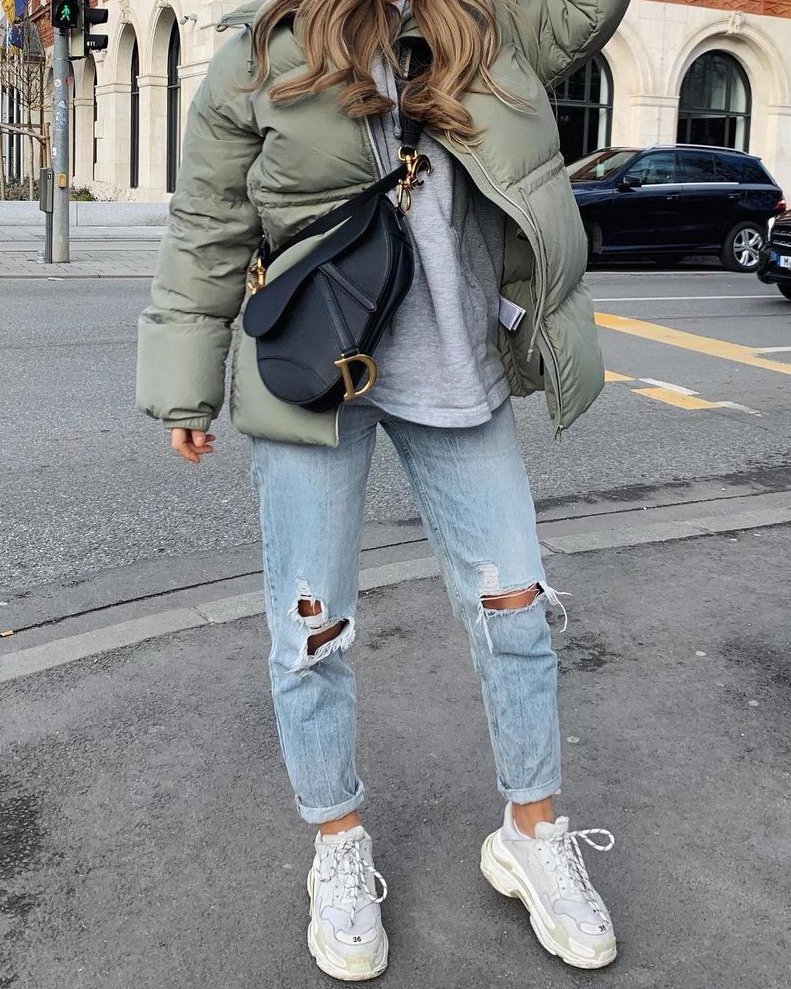The Saddle Bag: A Marketing Hoax
In the spring of 2018, Christian Dior’s creative director Maria Grazia Chiuri dipped into the Dior archives to resurrect a handbag style created by John Galliano in the early 2000s: the iconic Saddle Bag.
The Saddle Bag is one of the great It bags of modern fashion history. The bag’s shape is a deconstructed version of a horse’s saddle. The bag was ubiquitous in early 2000s paparazzi shots, seen on everyone from Paris Hilton to the fictional Carrie Bradshaw in Sex And The City.
In 2018, the fashion house decided to relaunch the Saddle Bag in a newer, more modern look. The first reinstallment had a variety of sizes, patterns, and colorways. Since the revival, Dior has continued to release new and limited-edition versions of the bag.
For the relaunch, Dior conducted a huge social media campaign with over a hundred influencers posting images of themselves wearing the bag, all at the exact same time. The bag turned up on the feeds of big names including Miranda Kerr, Bella Hadid, Elsa Hosk, and Chiara Ferragni. Each post was hashtagged #DiorSaddle, completely dominating fashion lovers’ feeds.
Keep in mind this was 2018. There were no TikTokers and a lot fewer Instagram bloggers. I would say that the Saddle campaign was one of the first times where followers questioned influencer brand deals. Fashion Instagram account @DietPrada quickly commented on the multitude of Saddle Bag posts: "Love the @Dior saddle, but is this a low-key ad campaign or what? No #ad #sponsored or gift indications. Sketchy?" For context, under Federal Trade Commission laws in the US, and Competition & Markets Authority regulations in the UK, any posts that are paid for by a brand, or where a brand has gifted the product with an expectation of endorsement, must include a clear indication that the post is either an ad or sponsored. There is not much public knowledge if Dior or the influencers were charged for not stating these posts were ads.
In addition to legal issues, the Dior campaign was thought to have hijacked the longevity of the bag. Taylor Lorenz, a writer who is an authority on influencer marketing, highlighted this issue in an interview with Fashionista about the #DiorSaddle social posts. Lorenz says, "What they've done is completely saturated the market and the bag is going to have a shorter shelf life because of it. There's always some fashion item, jewelry item, or 'look' on Instagram that every influencer gets, it's really hot and then you're kind of like, 'Okay, I'm bored, I've seen this one million times." In other words, Dior walked a fine line between creating a staple and popular bag or creating a microtrend.
Four years later, the bag is still around despite its oversaturation. Personally, this is very surprising. Typically an item that is popular to the degree the Saddle Bag was in 2018 does not stay relevant for long (learn more about this in our Microtrends 101 article). I definitely see fewer Saddle Bags around than I used to, but I do still see them. Now, the bag costs almost $4000. I believe that because the Saddle Bag is so pricey, those who bought this bag at its peak are thinking Screw it I paid so much I have to wear this bag. And of course, there are those who genuinely like the look of the bag even without celebrities wearing it.
Although the bag has stuck around, I urge you not to buy it if you are seeking to be ‘on-trend.’ The popularity of Dior’s bag is going downhill and will most likely fade away over the next year or so. The bag is simply too expensive to be bought for a trend that is already on the outs.
Lastly, I want to acknowledge how genius Dior’s marketing was. Now, I think the influencer route would be a bit different, as the industry has evolved and consumers are more aware of the tricks. But for the time, Dior’s campaign did the trick and put the Saddle Bag on the map once again. If Dior’s goal was to market this bag to be the latest trend, then they were extremely successful.
